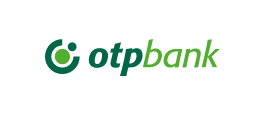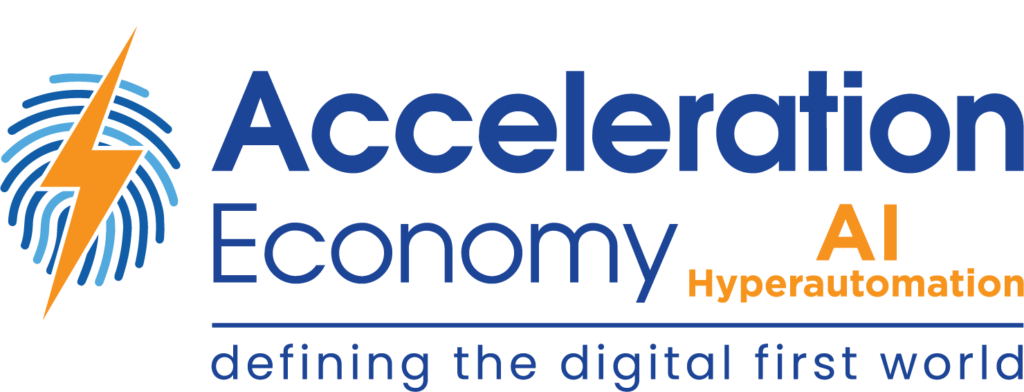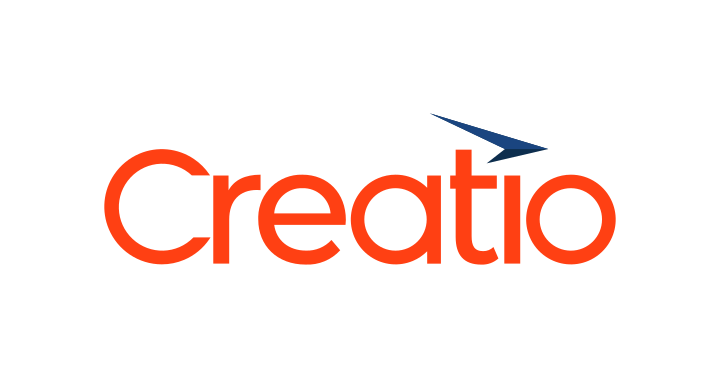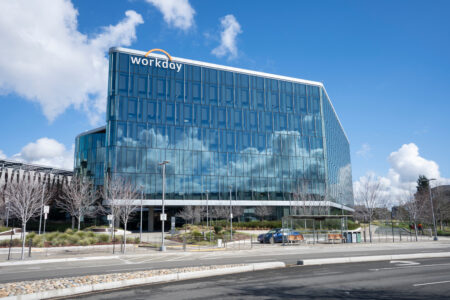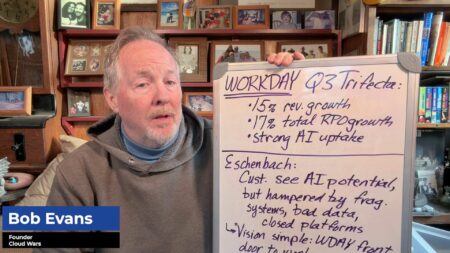Technology is constantly enabling greater automation of business functions. The problem is, developing and implementing various forms of automation usually requires highly specialized skill sets. These specialists are in short supply; according to the 2020 Worldwide Developer Census: There are roughly 26.2 million developers in the world, only half of whom work in development on a full-time basis.
As a result, it’s difficult for businesses to automate without offering enormous incentives to these developers, which many businesses aren’t in a position to do even when they’re not facing major economic headwinds. In fact, a Stripe survey of more than 1,000 C-suite executives found that 61% availability of, and access to, developer talent was a threat to the success of their business — an even bigger threat than the lack of access to capital.
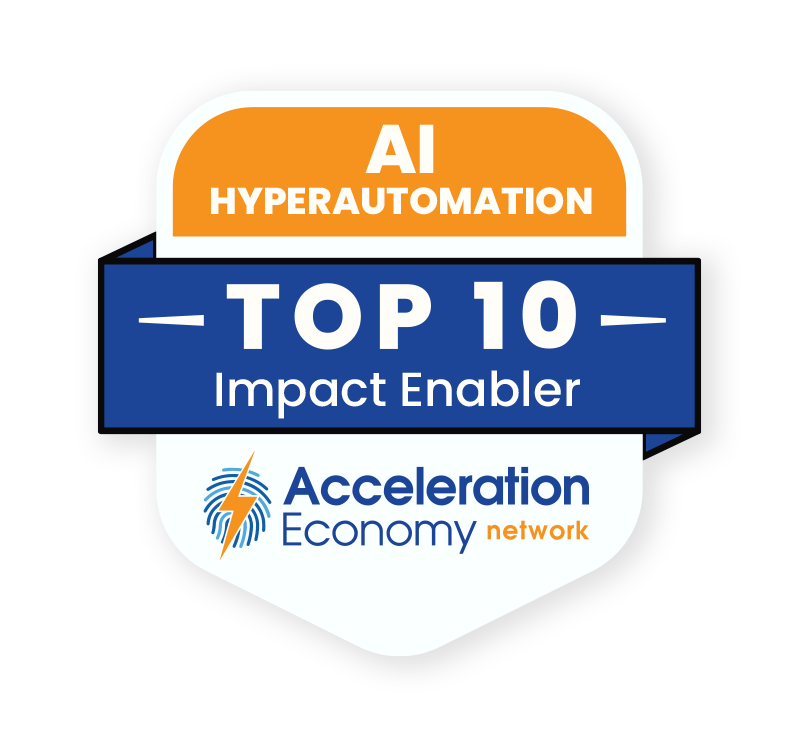
Which companies are the most important vendors in AI and hyperautomation? Check out the Acceleration Economy AI/Hyperautomation Top 10 Shortlist.
Amid these challenges, no-code functionality has dramatically lowered the barriers to building and deploying applications, not just for the purpose of automation. No-code allows rapid deployment of applications to speed up development cycles, start user testing early, and generally automate more functions of a business at a lower cost.
Creatio is a software company that provides a no-code platform for automation of workflows and CRM functions. Creatio is on the Acceleration Economy Top 10 Shortlist of AI/Hyperautomation Enablers.
Who They Are
Creatio’s products are designed to help businesses streamline their operations, improve customer relationships, and increase productivity by making it easier to automate a greater number of functions. By using Creatio’s platform, companies can automate processes and functions including sales, marketing, and customer service, and manage all of their customer interactions and data in one place.
Creatio Studio contains a set of tools, plugins, and integrations that let organizations build applications and customize interfaces with or without IT leading the charge. The platform prioritizes freedom and composability, letting tech and business pros combine tools and automated functions together in the ways most suited to their business.
Creatio’s founder and CEO, Katherine Kostereva, has been helping organizations accelerate their customer-facing and operational processes through automation for the past 20 years. She has worked in various roles at companies including IBM, ultimately shifting to entrepreneurship.
In February of 2021, Creatio raised $68 million in venture capital in a funding round led by Volition Capital with participation from Horizon Capital.
Today, the company operates in 14 countries, employing 700 people in seven offices, and it has 700 companies in its partners ecosystem.
What They Do
The Creatio automation platform was initially released in 2011 and built on the Microsoft .NET framework. Two years later the app was launched, and many integrations were added over time.
Today, the core platform includes these elements:
- Studio No Code Platform to automate workflows and build applications with maximum freedom and flexibility
- No-Code Designer to create and modify pages, views, data models, workflows, and integrations in a single workspace
- Freedom UI Designer contains a library of predefined views, widgets, and templates to accelerate design
- Workflow Automation to optimize and manage both structured and fluid processes
- Integrations that provide ready-to-use connectors
Workflow automations are available for various industries, including manufacturing, banking, telecommunications, and high tech. In banking, for example, Creatio will enable customers to build end-to-end customer journeys and streamline front- and middle-office workflows.
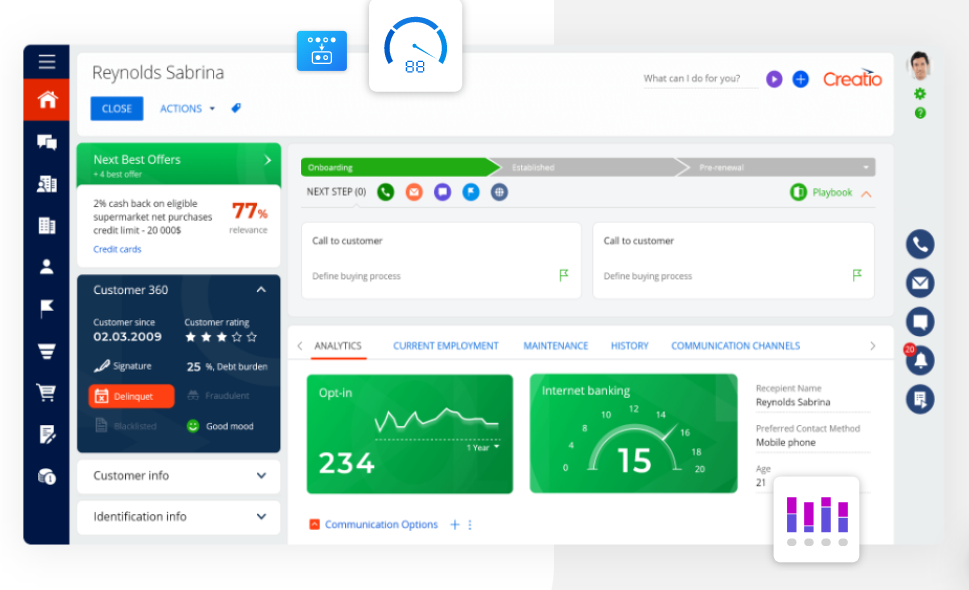
Built to run on AWS and Azure, the Creatio platform ensures scalability, security, and, most importantly, flexibility by supporting various cloud-based configurations. The company also offers on-site deployment, letting customers maintain full control of the software with direct access to databases, as well as the ability to set up complex integrations and configure personal permissions. The platform provides powerful AI/ML models so that customers can configure their AI use cases using the no-code functionality.

“Growth and success of any organization increasingly depend on the ability to automate and change workflows on the fly. Your business depends on it. Your employees embrace it. Your customers demand it. Creatio delivers the freedom to own your automation and change fast thanks to the power of the no-code platform.”
Katherine Kostereva, Creatio founder and CEO
Key use cases for the Creatio software include:
- Marketing and sales: Provides customer 360-view dashboards, manages complex campaigns across channels, and real-time analytics tracking. It also affects clean handoffs from marketing to sales, automates sales pipelines, and more.
- Service: Boosts contact center efficiency by managing cross-channel communications, using AI to filter and resolve common issues, and managing case lifecycles.
- Process management: Enables diverse types of workflows with simple visual tools and collaboration capability. Process flows can be automatically converted into PDFs for proper documentation.
- Project management: Manages resource allocation, budget tracking, and project scheduling.
- Human resources: Handles employee onboarding, performance evaluations, and talent management.
- Supply chain management: Executes inventory management and order fulfillment.
- Financial management: Streamlines invoicing, expense tracking, and budgeting.
The company offers the Creatio Marketplace, a collection of more than 400 integrations, plug-ins, and industry-specific applications. One great example is the FedEx connector, which lets customers manage orders and shipments directly in the Creatio platform.

An important attribute of Creatio is its partner program, which is designed for other software vendors, low-code/no-code integrators, consultants, and software resellers to plug their solutions into the Creatio platform.
The partnership program goes beyond offering just sales and commissions; Creatio puts effort behind co-marketing initiatives, proactively engaging with partners on active opportunities. Some notable Creatio partners include TATA Consultancy Services, which provides IT consulting; Proceed, an Israeli consulting firm; and Solutions Matrix, which delivers CRM applications.
The company is regularly adding new tools and features, both to its core platform and to the Marketplace. For example, Creatio recently added a connector for Landingi, which lets you build and deploy high-conversion landing pages by providing templates and customization options, with the option to track leads directly within Creatio.
Creatio has also focused heavily on low-code/no-code education. “I think it’s very important to inspire a younger generation to learn more about the tech space and get practical skills,” says Kostereva. “That’s the reason why we invest in Creatio No-Code University and create educational materials (the most recent one is a book on no-code methodology – ‘The No-Code Playbook’).”
Who They’ve Impacted
OTP Bank Romania, a subsidiary of OTP Group, is a bank covering the central and Eastern European markets. The bank uses Creatio to unify sales, marketing, and customer center processes while consolidating customer data across departments.
The work includes a business process management tool to support guided business processes, such as customer consultations management, and maintenance activities for current accounts.
The bank reports the following outcomes through its use of Creatio:
- 850 employees at the bank reported an increase in performance
- Increased transparency of back office processes
- Improved risk management accuracy
Why Creatio Makes Our AI/Hyperautomation Top 10 Shortlist
Our practitioner analysts chose Creatio for our list of Top 10 AI/Hyperautomation vendors for the following reasons:
- Delivers speed and functionality for developers and business professionals through its low-code/no-code approach
- Integrates and supports diverse data sources, a critical consideration for the complex data estates that exist, especially in larger companies
- Supports diverse use cases from marketing and sales to process management to supply chains
- Achieves a powerful set of customer endorsements including OTP Bank Romania
Looking for real-world insights into artificial intelligence and hyperautomation? Subscribe to the AI and Hyperautomation channel:





